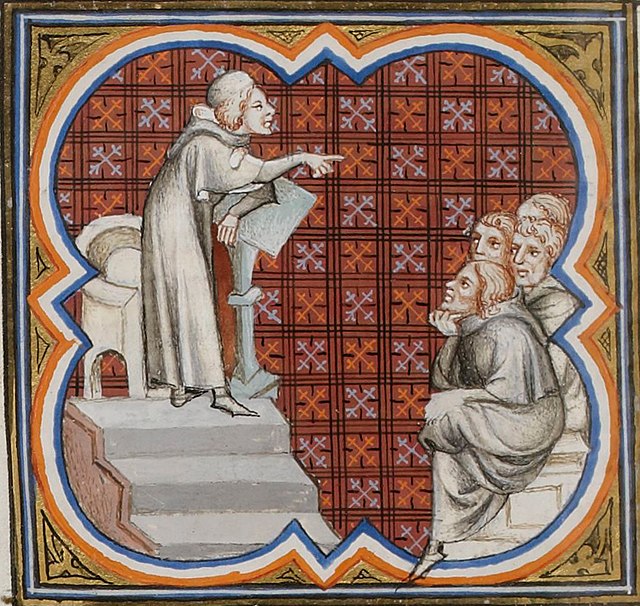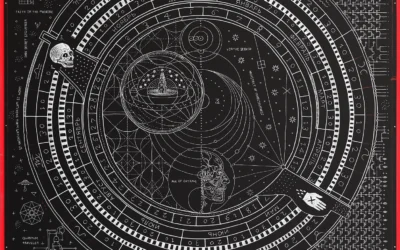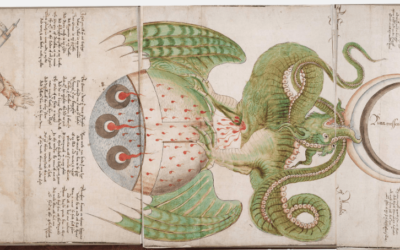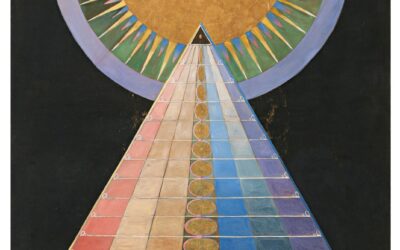Who was Amalric of Bena ?
 Amalric of Bena, a medieval French theologian and philosopher who lived in the late 12th and early 13th centuries, developed a unique and influential system of mystical theology that has had significant resonance with modern depth psychology, particularly the theories of Carl Jung and his followers. Amalric’s ideas about the nature of God, the structure of the soul, and the path to spiritual transformation offer profound insights relevant to psychotherapy and the conceptualization of psychological trauma.
Amalric of Bena, a medieval French theologian and philosopher who lived in the late 12th and early 13th centuries, developed a unique and influential system of mystical theology that has had significant resonance with modern depth psychology, particularly the theories of Carl Jung and his followers. Amalric’s ideas about the nature of God, the structure of the soul, and the path to spiritual transformation offer profound insights relevant to psychotherapy and the conceptualization of psychological trauma.
Life and Historical Context of Amalric of Bena
Amalric was born around 1150 in the village of Bena, near Chartres, France. Little is known about his early life, but records indicate he studied theology at the University of Paris and later taught there as a master of theology. Amalric’s theological views, which emphasized the immanence of God in all things and the potential for the human soul to achieve union with the divine, brought him into conflict with church authorities.
In 1204, Amalric was condemned for heresy by a council at the University of Paris. He was forced to recant his views and do penance, but he continued to teach and gather followers. After his death around 1205, a council held in Paris in 1210 posthumously condemned Amalric again and ordered his bones exhumed and cast out of consecrated ground. His followers, known as the Amalricians, were persecuted as heretics.
Despite the suppression of his ideas, Amalric’s thought continued to circulate underground and influence later mystical and heterodox movements. Manuscripts of his writings survived and were read by philosophers and theologians in the following centuries.
Key Ideas in Amalric’s Thought
At the core of Amalric’s theology was the idea that God is the one true being and substance underlying all of reality. For Amalric, all created things are not separate from God but are essentially divine, as God is incarnate in them. This view, known as pantheism, holds that the Creator and creation are ultimately one.
Amalric taught that God undergoes a dynamic process of self-manifestation and self-realization through the coming into being of the world and humanity. He described three stages or eras in this process:
- The era of the Father, corresponding to the Old Testament period
- The era of the Son, initiated by the incarnation of Christ
- The era of the Holy Spirit, a coming age in which God would be directly known and experienced by all people
In this final era, Amalric taught, the external structures of the church and its sacraments would be transcended, as all people would achieve a direct, inward union with the divine. This idea of the soul’s journey to God was central to Amalric’s thought.
For Amalric, the human soul is itself divine in its essence and has the potential to realize its unity with God through a process of awakening and transformation. This process involves turning within, embracing poverty of spirit, and annihilating the ego or sense of separate selfhood. Amalric describes this as a “return” of the soul to its divine source and ground.
While Amalric’s ideas were expressed in Christian terms, drawing on Neoplatonic and mystical traditions, they have strong resonances with esoteric currents in other religions which emphasize the essential unity of the human and divine. Sufism, Kabbalah, Advaita Vedanta and Buddhist philosophy all contain teachings paralleling Amalric’s in important ways.
Influence on Carl Jung and Depth Psychology
The Swiss psychoanalyst Carl Jung, one of the founders of depth psychology, was deeply influenced by Amalric’s ideas, which he encountered through his study of medieval mysticism and alchemy. Jung saw in Amalric a kindred spirit whose insights anticipated his own psychological theories.
Jung’s concepts of the Self, the process of individuation, and the integration of the shadow – the unconscious or disowned parts of the psyche – have significant parallels with Amalric’s teachings on the divine essence of the soul, its journey of transformation, and the need to embrace poverty of spirit. Both Amalric and Jung stress the importance of an inward turn, a confrontation with the darkness and chaos within, in order to realize the fullness and wholeness of the human psyche in its connection to the divine or archetypal ground.
For Jung, the individuation process, the soul’s journey to wholeness, is ultimately a spiritual as well as psychological one, leading to the birth of the “Self” as an embodiment of the divine within. This has strong echoes of Amalric’s idea of the “return” of the soul to God and the realization of the divine nature at the core of the human being.
Jung also drew on Amalric’s prophetic ideas about the three eras of the Father, Son, and Holy Spirit as a template for understanding the evolution of human consciousness. Jung saw the modern era as a time of transition into a new “era of the Holy Spirit,” characterized by the emergence of a more direct, experiential spirituality and an integration of the broken, split-off parts of the psyche.
Implications for Psychotherapy and Trauma
Amalric’s ideas, as interpreted through the lens of Jungian psychology, have significant implications for psychotherapy and the understanding and treatment of trauma. His emphasis on embracing the darkness and chaos within the soul, and the need for a radical inward turn and self-confrontation, provide a framework for depth psychological approaches to inner work.
In many ways, the process of psychotherapy, especially in depth psychological modalities like Jungian analysis, can be seen as a contemporary realization of the kind of transformative inner journey Amalric describes. The therapeutic process involves a descent into the unconscious depths of the psyche, a confrontation with the shadow and disowned parts of the self, and an integration and transformation leading to greater wholeness and self-realization.
This is especially relevant in working with trauma, where the psyche has been fragmented and split by overwhelming experiences. The traumatized individual often carries deep feelings of shame, fear, and self-hatred, and has exiled or dissociated wounded parts of the self. The process of trauma therapy involves reclaiming and reintegrating these split-off parts, and finding a way to embrace and transform the darkness within.
Amalric’s vision of the soul’s journey to God, and the need to embrace poverty of spirit and undergo a radical kenosis or self-emptying, can provide a meaningful framework for this difficult inner work. It suggests that the process of confronting and integrating trauma is not just a psychological task, but a spiritual initiation into a deeper dimension of the self and its connection to the numinous ground.
From this perspective, trauma is not just a wound, but potentially an opening into a process of profound transformation and self-realization. The shattered psyche, in the very rawness and vulnerability of its brokenness, is paradoxically close to the Source, the “God beyond God” that is the true depth of the soul. The journey through darkness is a stripping away of the false self, a burning away of all that is not essential, leading back to the indestructible divine core.
Of course, this is not to minimize or romantically idealize trauma, which involves deep suffering and requires sensitive clinical care and support. But Amalric’s mystical vision can provide a fuller context for the process of healing, situating it within a larger spiritual journey of awakening.
Amalric’s ideas also have implications for the role of the therapist and the nature of the therapeutic relationship in depth psychological work. The therapist is not just an analyst or expert, but a companion and guide on the journey of the soul, helping to contain, witness, and navigate the descent into the depths. The therapist must have sufficient depth and self-knowledge to be able to hold and metabolize the darkness that emerges, modeling the radical acceptance and compassion that allows the client to embrace their own shadow.
The therapeutic relationship thus becomes an alchemical crucible for transformation, a sacred space in which the divine can manifest and incarnate itself through the meeting of two souls. Like the mystic, the therapist is a midwife of the divine birth, helping to bring to fruition the unfolding of the Self within the client’s psyche.
From Trauma to Transcendence: Interspiritual Implications of Amalric’s Teachings
While framed within a medieval Christian context, Amalric’s mystical theology is deeply resonant with esoteric traditions across different religions that emphasize the fundamental unity of the human and divine, and the transformative potential of the inward journey. His vision of the immanence of God in all things, and the soul’s potential to realize its divine nature, is akin to the concept of the “Atman” or divine Self in Hinduism, the “Buddha-nature” in Buddhism, the “divine spark” in Kabbalah, and the wahdat al-wujud or “unity of being” in Sufism.
These interspiritual parallels suggest that the process of trauma healing and shadow integration described by depth psychology can be situated within a larger context of spiritual awakening and transformation that is shared across mystical paths. The descent into the underworld of the psyche, the confrontation with darkness and dissolution, is also a recurring motif in the shamanic initiation journeys, heroic myths, and mystery rites of different cultures.
At the deepest level, Amalric’s theology invites a non-dual understanding of trauma and transcendence. It suggests that our core identity is the divine itself, and that the experience of trauma, for all its shattering impact, does not ultimately touch this deepest Self. The healing of trauma is thus not a restoration of the ego to its former state, but a radical opening to a more fluid and permeable sense of self rooted in divine ground.
In the journey of shadow work and trauma integration, we are paradoxically brought closer to the reality of our essential indestructibility as expressions of the divine. The soul is not wounded but awakened through intense encounter with darkness and mortality.
From this view, trauma is not merely a clinical condition to be cured, but a portal for profound metanoia or spiritual transformation. Its outer chaos and fragmentation mirror the “shattering of the vessels” in Kabbalah, the dissolution of the egoic self that allows the light of divine to pour in. The traumatized psyche is broken open to the numinous, allowing for a more direct revelation of the sacred.
Of course, this does not mean spiritually bypassing or minimizing the real suffering and disorientation of trauma. Mystical realization is not equivalent to psychological process. But Amalric’s ideas point towards the possibility of a deeper alchemy at work within the trauma healing journey, an unfolding of the Self beyond the shattered ego.
In this light, the therapist becomes more than just a clinician treating symptoms, but a companion in a process of profound spiritual initiation and awakening. Like a Zen master or Sufi sheikh, the depth psychotherapist helps the client to navigate the borderlands between fragmentation and transcendence, crucifixion and resurrection, death and rebirth.
This is a delicate and sacred task requiring great compassion, skillfulness, and humility. It invites the therapist to undergo their own journey of shadow work and egoic dissolving, to become increasingly transparent to the divine energy moving through the therapeutic relationship.
Ultimately, Amalric’s radical mysticism points towards the possibility of trauma work as a spiritual path sui generis, a way of fully embracing and navigating the shattered landscapes of the soul in order to midwife the divine birth within. The broken psyche becomes the very womb of God, the sacred void from which new life emerges. In the depths of trauma’s unraveling we are opened to the groundless ground of Being, invited into a shattering intimacy with the Absolute.
Thus trauma work becomes a mystical vocation, an alchemical opus of the soul bringing brokenness towards wholeness, crucifixion towards resurrection. The traumatized individual is recognized as a holy figure, a shaman-in-the-making, an initiate in the storms of the Greater Mystery. And the therapist becomes a hermeneut of the sacred symptoms, reading the difficult texts of traumatized mind, body, and soul in order to uncover their hidden revelations.
Cultivating Wisdom, Strength and Spiritual Transformation in the Aftermath of Trauma
The life and ideas of Amalric of Bena, a radical medieval mystic, have profound and surprising implications for our contemporary understanding of depth psychology, psychotherapy, and trauma. His vision of the fundamental unity of the human and divine, and of the transformative potential of the inward journey, anticipated and echoed the insights of modern figures like Carl Jung who helped shape the development of depth psychology.
Amalric’s ideas provide a rich spiritual and philosophical framework for conceptualizing the process of trauma healing as an initiation into a deeper dimension of the Self and its essential divinity. They invite us to reframe the shattering, fragmentation, and descent into the shadow that often characterize psychological trauma as a perilous yet potentially revelatory journey of death and rebirth, an alchemical opus of the soul.
His mystical theology also opens up fertile interspiritual horizons, suggesting that the psychotherapeutic process of trauma integration can be a portal for the kind of ego dissolution and unio mystica or divine union that is described by esoteric traditions across religions. Amalric thus points the way towards a potentially deep synthesis of psychological and spiritual insight, grounded in a non-dual vision of healing and awakening.
At the same time, the persecution and exile inflicted on Amalric and his followers in his medieval context provides a sobering reminder of the perennial suppression that radical mystical wisdom has faced by religious and intellectual orthodoxies. It could be argued that the mainstream of modern psychology has at times enacted a similar dismissal of the deeper transpersonal and spiritual dimensions of the human psyche in its quest for scientific legitimacy.
Amalric’s ideas thus remain provocative and potentially subversive for contemporary paradigms of mental health and well-being. They challenge us to expand our models of trauma and healing beyond the secular, bio-medical frameworks to encompass the sacred, archetypal, and transpersonal domains. They invite a new generation of researchers and clinicians to explore the farther reaches of human consciousness and its capacity for regeneration and rebirth.
Ultimately, Amalric’s theology continues to resonate because it speaks to the deepest perennial questions and longings of the human spirit – to touch and be touched by the infinite, to discover the divine depth within the abyss of the personal unconscious, to find meaning and revelation within the most shattering ordeals of existence. His voice joins the chorus of mystics through the ages inviting us beyond the limited and contingent ego into the immensity of the Self, beyond the exile of separation into the oneness of divine embrace, beyond trauma’s wasteland into the promises plenitude of Grace. Amalric summons us to have faith in the wisdom and strength to haltingly emerge within the aftermath of trauma and shattered illusions, and to stay true to the exacting path of spiritual transformation even amidst the darkest of passages.
In a world riven by traumas both personal and collective, the life and teachings of this enigmatic medieval figure continue to shimmer as an invitation and provocation, reminding us of the unfathomable healing power we carry in our depths. As we rise to the challenge of metabolizing and integrating the traumatic shadows of our time, Amalric’s mystical whispers point towards the radical hope at the secret heart of the transformational journey. For at the very bottom of the broken psyche, we are again and again directed back to the One Reality ‘in Whom we live, and move, and have our being’, the ‘peace that surpasses understanding’, the sacred Presence awaiting us as destination, path and companion in the existential struggle towards wholeness.
Main Ideas and Key Points:
- French theologian and philosopher who lived in the late 12th/early 13th century
- Taught at the University of Paris
- Developed a system of mystical theology that was considered heretical
- Key ideas:
- God is the one true being underlying all reality (pantheism)
- All created things are essentially divine
- Three stages in God’s self-manifestation: Father, Son, Holy Spirit
- Human soul is divine in essence and can realize unity with God
- Emphasized inward spiritual journey and transcendence of ego
- Condemned for heresy in 1204 and posthumously in 1210
- Followers (Amalricians) were persecuted as heretics
- Ideas continued to circulate and influence later mystical movements
- Resonances with depth psychology, especially Carl Jung’s theories:
- Process of individuation
- Integration of the shadow
- Evolution of consciousness
- Implications for psychotherapy and trauma treatment:
- Framework for inner work and confronting the unconscious
- Trauma as potential initiation into deeper self-realization
- Therapeutic relationship as alchemical vessel for transformation
- Parallels with non-dual mystical traditions across religions
- Suggests possibility of integrating psychological and spiritual approaches to healing
BIBLIOGRAPHY:
- Amalric of Bena. The Inquisitorial Documents of Amalric. Translated by Robert Reiley (2005).
- Capelle, Wilhelm. “Amalrich von Bena und der Pantheismus seiner Zeit.” Zeitschrift für Kirchengeschichte (1934): 1-15.
- Dinzelbacher, Peter. “Amalrich von Bena.” In Metzler Lexikon christlicher Denker: 700 Autorinnen und Autoren von den Anfängen des Christentums bis zur Gegenwart. JB Metzler, 2000.
- Fuhrmann, Maximilian. “Der Pantheismus des Amalrich von Bena.” In Theologie und Glaube, vol. 27, pp. 812-819. Aschendorff, 1935.
- Godman, David, ed. Be as you are: The teachings of Sri Ramana Maharshi. Penguin UK, 1985.
- Herman, Judith Lewis. Trauma and recovery: The aftermath of violence–from domestic abuse to political terror. Hachette UK, 2015.
- Jung, Carl Gustav. Aion: Researches into the Phenomenology of the Self. Routledge, 2014.
- Jung, Carl Gustav. The red book: Liber novus. WW Norton & Company, 2009.
- Krampl, Ulrike. “Amalrich von Bena und der mittelalterliche Pantheismus.” In Die Kirchenkritik der Mystiker: Prophetie aus Gotteserfahrung, vol. 2, pp. 47-76. Academic Press Fribourg, 2005.
Read More Depth Psychology Articles:
Taproot Therapy Collective Podcast
Mystics and Gurus

























0 Comments